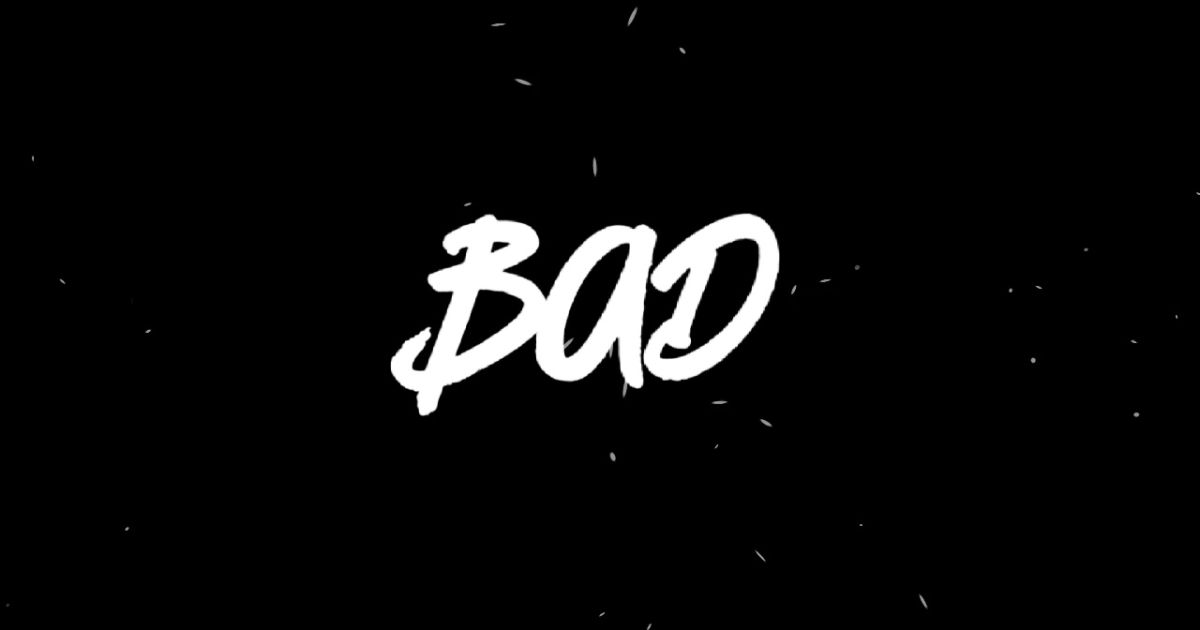Everyone uses the word bad, but it can feel boring and overused. We say bad to describe everything from a rough day to a disappointing meal or a poor decision. But bad doesn’t always capture the full story. Sometimes, you want a word that hits harder or sounds more precise.
That’s why knowing other ways to say bad is super useful. Maybe a movie wasn’t just bad, it was downright dreadful or just mediocre. Or a situation wasn’t simply bad, it was truly unpleasant or disappointing. In this article, you’ll discover a variety of alternatives to spice up your speech and writing. Say goodbye to boring repeats and express yourself with more power and style!
Understanding the expression “bad”
The expression “bad” covers a wide range of meanings, from poor quality and unfavorable conditions to moral negativity and disappointing outcomes. It describes anything that falls below a standard, whether it’s an object, performance, or situation. Understanding its nuances helps you choose the right word for clarity and impact.
Other Ways to Say “Bad”
Here are several alternatives to say “bad,” each adding a unique shade of meaning: poor, inferior, subpar, dismal, lousy, mediocre, unsatisfactory, deficient, dreadful, atrocious, woeful, and rotten. Using these words thoughtfully can enhance your expression and better convey the exact degree or type of negativity you want to describe.
1. Poor
Example: “The movie received poor reviews from critics.”
Meaning: Describes something that lacks quality or falls below the expected standard. It often implies a deficiency in quantity, degree, or extent. In some cases, “poor” can refer to lacking financial means or being in an unfavorable condition. It’s a very versatile word that applies to objects, people’s character, outcomes, or situations.
Usage: You’ll hear it in both formal and informal contexts. For example, in a formal report, “poor performance” might highlight failure to meet goals, while in casual talk, “poor weather” might mean gloomy or unpleasant conditions. It’s also used broadly in speech and writing to describe low quality or value.
2. Inferior
Example: “The product was considered inferior compared to its competitors.”
Meaning: Indicates something of lower quality, value, or rank when compared to others. It usually carries a comparative sense, implying that the subject is subordinate or less worthy in a particular context. Often, “inferior” points to something that is not just bad, but demonstrably less effective or valuable.
Usage: Mostly used in formal or professional settings, such as business comparisons, academic evaluations, or product reviews. It’s less common in casual conversation but effective for emphasizing a gap in quality or standards.
3. Subpar
Example: “The team’s performance was subpar during the championship.”
Meaning: Describes something falling below the normal or expected standard. It often means the quality or performance is mediocre, inadequate, or disappointing. The term originally comes from golf (where “par” is the standard score), but now it’s widely used in many fields.
Usage: Common in casual and professional settings, especially in sports, business, or customer service contexts. You might say “subpar results” to indicate unsatisfactory outcomes without being too harsh.
4. Dismal
Example: “The dismal weather brought rain and gloominess all day.”
Meaning: Refers to something causing a sense of gloom, bleakness, or hopelessness. It often implies a negative emotional impact or a failure to meet expectations. “Dismal” can describe both literal conditions (like weather) and abstract things (like performance or mood).
Usage: Frequently used in both formal and informal speech to evoke strong feelings of disappointment, sadness, or unpleasantness. For example, a “dismal sales report” highlights serious underperformance.
5. Lousy
Example: “I had a lousy day because everything went wrong.”
Meaning: A colloquial and informal term meaning poor quality or an unpleasant situation. It also can refer to feeling unwell or a disagreeable mood. It’s a more casual, expressive way to say something is bad or disappointing.
Usage: Mostly used in everyday conversation and informal writing. It adds personality and tone, making it suitable for storytelling or expressing frustration in a friendly way.
6. Mediocre
Example: “The performance was mediocre, neither good nor bad.”
Meaning: Signifies average quality that neither excels nor fails drastically. Often, it implies something is uninspiring or falls short of excellence. Mediocrity suggests a lack of distinction or anything remarkable.
Usage: Used in formal, academic, and informal settings to honestly appraise quality or results. It’s often a polite way of saying something was “just okay” but didn’t stand out.
7. Unsatisfactory
Example: “The final report was unsatisfactory and required revisions.”
Meaning: Means not meeting required standards, expectations, or needs. It focuses on deficiencies or inadequacies in quality, performance, or outcome. This word is often used where evaluation or judgment is formal or official.
Usage: Common in professional, academic, and formal writing, especially in reviews, assessments, or feedback contexts.
8. Deficient
Example: “The software had a deficient security system.”
Meaning: Describes the absence or insufficiency of an essential element or quality. It points to inadequacy or incompleteness that affects the subject’s effectiveness or acceptability.
Usage: Mostly found in technical, academic, or professional discussions where precise evaluation is necessary. It emphasizes what’s missing rather than general poor quality.
9. Dreadful
Example: “The accident caused dreadful casualties.”
Meaning: Indicates something causing horror, serious displeasure, or fear. It emphasizes severity, unpleasantness, or grave consequences. “Dreadful” often conveys a strong emotional or moral reaction.
Usage: Used in formal and informal contexts, especially to describe tragic events, disasters, or very poor conditions.
Read More: 15 Other Ways to Say “Good Night”
10. Atrocious
Example: “The living conditions in the camp were atrocious.”
Meaning: Highlights extreme cruelty, brutality, or severe unpleasantness. It often involves moral judgment and violation of accepted standards or human rights.
Usage: Common in formal writing and speech to condemn behaviors, situations, or conditions that are shockingly bad or unethical.
11. Woeful
Example: “The team’s woeful defense led to their defeat.”
Meaning: Expresses sorrow, distress, regret, or pitiable situations. It describes poor performances, unfortunate events, or emotional pain.
Usage: Often found in literary or formal contexts, or to add emotional weight in storytelling or analysis.
12. Rotten
Example: “The fruit was rotten and inedible.”
Meaning: Describes physical decay, foul smell, or moral corruption. It can signify decline, unpleasantness, or failure. Also used metaphorically to describe something morally bad or corrupt.
Usage: Used in everyday language and informal speech. It’s vivid and expressive, suitable for both literal and figurative descriptions.
When to use different expressions of “bad”
Use different expressions of “bad” depending on the context and tone. For casual talks, choose words like lousy or rotten to sound natural. In formal or professional settings, prefer precise terms like inferior or deficient. Academic writing calls for mediocre or unsatisfactory, while creative writing benefits from vivid words like dismal or atrocious to evoke strong emotions.
Casual Settings
In casual settings, words like lousy, poor, and rotten are commonly used to describe unpleasant situations, feelings, or objects in everyday conversations. People might say, “I had a lousy day” or “That pizza was rotten,” using simple language that conveys clear, direct meaning without sounding too harsh. Casual speech often embraces colloquial expressions and emotional tones, making these words relatable and easy to understand.
Formal Settings
In formal contexts, terms such as inferior, subpar, unsatisfactory, and deficient are preferred to maintain professionalism and precision. For example, business reports might mention “subpar performance” or “deficient quality standards” to objectively evaluate products or services without emotional bias. These words carry specific, measurable meanings and help communicate critiques clearly in corporate, legal, or professional environments.
Academic Settings
Academic settings require careful and precise language, where words like mediocre, deficient, and unsatisfactory are frequently used to evaluate research, theories, or results. Scholars and students might write about “deficient methodology” or “mediocre outcomes” in papers or presentations to highlight gaps, shortcomings, or average quality. The tone tends to be analytical and objective, focusing on evidence-based assessments.
Literary or Creative Writing
In literary or creative writing, authors often use evocative and vivid words like dismal, dreadful, atrocious, woeful, and rotten to create mood, atmosphere, or emotional depth. Phrases like “dismal weather,” “atrocious cruelty,” or “woeful hearts” enrich narratives with dramatic tone, symbolism, and imagery. These words help storytellers express complex feelings, paint bleak scenes, or emphasize moral decay in a way that engages readers emotionally.
Conclusion
To sum up, the word bad is simple but can get old fast. Using bad too much can make your speech or writing sound dull. That’s why it’s smart to learn other ways to say bad. These words help you describe things more clearly and with more feeling. Whether you talk about a bad meal, a bad day, or a bad decision, you can find better words to explain exactly what you mean.
Remember, using different words instead of just bad adds variety and depth to your language. It also helps your audience understand you better. Next time you want to say bad, think about the situation. Choose the word that fits best. This small change will improve your communication a lot. So, don’t rely only on bad , explore the many alternatives. It will make your speech and writing much stronger and more interesting.
FAQ’s
What does bad mean?
Bad means something is not good or below the expected quality. We use bad to describe things, feelings, or situations that are unfavorable or poor.
When should I use the word bad?
Use bad to talk about negative experiences or things that don’t meet standards. Bad works well in casual speech and everyday conversations.
Are there better words than bad?
Yes, many words can replace bad, like poor, lousy, or dreadful. Using alternatives makes your writing and speech clearer and more interesting than just bad.
How can I avoid saying bad too much?
Try using different expressions depending on context. Replace bad with words like inferior, mediocre, or unsatisfactory to add variety and depth to your language.
Is bad always negative?
Mostly, bad has negative meanings. But sometimes, it can be used in informal ways, like saying bad in a cool or impressive sense, depending on tone and setting.

Grammerroot is your trusted source for mastering English grammar and language skills. From simple rules to advanced tips, we help learners build strong foundations through easy-to-understand content. Learn smart, learn right — only at Grammer Root.




